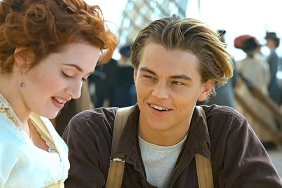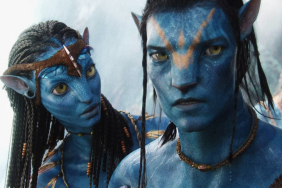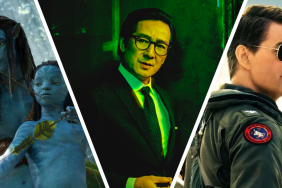
Before going into The Mortal Instruments: City of Bones earlier this week I searched all over to find out if it was in 3D. It wasn’t, but why wouldn’t it be? It costs just a few million extra to post-convert and then you can price gouge the consumer under the lie 3D makes the experience better when in fact it just makes the picture blurry and requires special glasses to make sure it’s in focus.
I’ve seen only a few films where I can say the 3D had any effect on the viewing experience. Hubble 3D in IMAX was amazing, the 3D animation in Zack Snyder‘s Legend of the Guardians: The Owls of Ga’Hoole was impressive even though the movie stunk, I actually thought some of the helicopter shots in World War Z were quite impressive and Avatar had its moments. Overall, though, you could get rid of 3D from all of those except Hubble and the experience would have been exactly the same, which brings me to Avatar director and 3D enthusiast, James Cameron‘s latest declaration.
Speaking with the BBC (via The Playlist) Cameron said, “For me it’s absolutely inevitable that entertainment will be 3D, it’ll all be 3D eventually, because that’s how we see the world.”
As long as we’re letting our opinions be known, I can’t tell you how tired I am of that “it’s how we see the world” argument. A talented director of photography can give a 2D image as much depth as a director needs. Do you need only the character in the foreground to stand out? Then that’s where we’ll focus. Do you want the entirety of the image to play a part in the scene? Then let’s utilize a wider lens or turn up the lights and lower the aperture and provide some deep focus. Or just go nuts like the Wachowskis who everything in focus and beefed up the contrast with Speed Racer.
Cameron also goes to the Oscar well, citing the fact that three out of the last four Best Cinematography Oscars went to films shot in native, digital 3D — Avatar, Hugo and Life of Pi — Inception being the exception. What he fails to mention, however, is that out of those four years, those were the only three of the 20 films nominated that where shot in digital 3D. Sure, they won, but it’s not exactly a good ratio.
He then discusses how quality 3D is being eroded by low light projectors and bad conversions. He cites his conversion of Titanic as an example of a good conversion, but one that also cost $18 million, which he says studios don’t want to spend. Interestingly enough, he makes no mention of the quality of the films themselves… I guess that’s not really all that important.
Cameron ends with a discussion on autostereoscopic 3D (something already being utilized for the Nintendo 3DS), which would eliminate the need for glasses. This is where his theory obviously holds the most water. Push aside all the excuses. If 3D can be accomplished without the need for glasses and if consumers don’t have to pay more to get it, then you may have something. Nevertheless, I am still waiting to be convinced it actually makes the viewing experience any more enjoyable.
From what I understand of the development of autostereoscopic displays, the largest issue is creating it for multiple viewers as displays such as the Free2C is really only usable by one person at a time. As far as multiple view technology is concerned it seems very specific to viewing zones at this time, which would almost require a reconfiguration of theaters to make sure people were sitting in a proper “zone” to ensure the complete image would be visible in 3D. Suffice to say, they’re working on it but it’s not here yet.
Watch the full interview below and weigh in with your thoughts in the comments.









